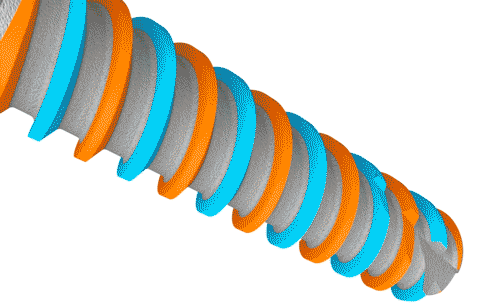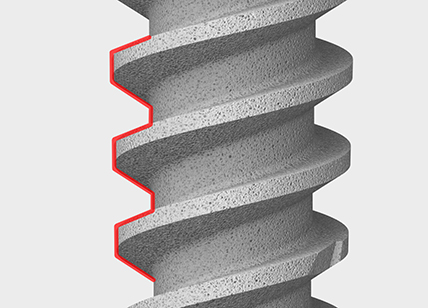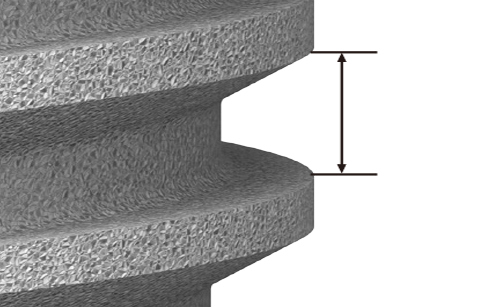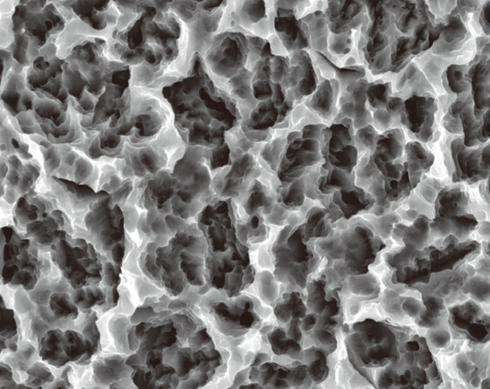
With an innovative dual thread design that simplifies insertion and ensures maximum strength and stability, our Crestone implant is the one-piece implant dentists and patients love for narrow ridges and tight spaces.

Machine Surfaced Gingival Collar
The Machine Surfaced Gingival Collar reduces the risk of marginal bone loss.
Double Thread
The Double Progressive Macro-Thread of the implant allows easier and quicker implant placement. It minimizes trauma to the bone while maintaining the excellent gripping effect.
Cutting Edges
The two helix cutting blades’ self-tapping function of the implant allows smooth penetration with minimal bone destruction. The rounded implant apex reduces the risk of bone perforation.
Body Design
The tapered geometry of the implant body allows the compressive load to be transferred and focused to the apical zone of the implant. It greatly contributes to the increasing of the primary stability.
Reverse Buttress
The Reverse Buttress [Macro Thread] is optimal for the distribution of the marginal forces. The transmittance of both axial and radial force allows increased bone formation as well as higher Bone-Implant-Contact (BIC).


Thread Pitch
The Crestone Implant’s thread pitch is 1.8mm. This low thread pitch decreases the aggressiveness of the implant and increases the surface envelop for earlier osseointegration. It also reduces the effective stress.
Bone Condensing
The gradual widening of the thread thickness compresses the bone to yield enhanced implant fixation and higher stability even in compromised bone conditions. It also functions like a narrow ridge expander.

Surface Treatment
The implant surface is achieved by sandblasting technology (Aluminum oxide particles) followed by acid etching. This surface treatment method is the most researched technology in the dental implant market. The average Ra value, a standard parameter to describe average surface roughness, is 2.0 μm.
Furthermore, Crestone implant surface is modified to be an osteoconductive and hydrophilic surface. This promotes active ion interaction with blood plasma, resulting in better Bone-Implant-Contact (BIC) distribution and optimal cellular adhesion for faster osseointegration.


